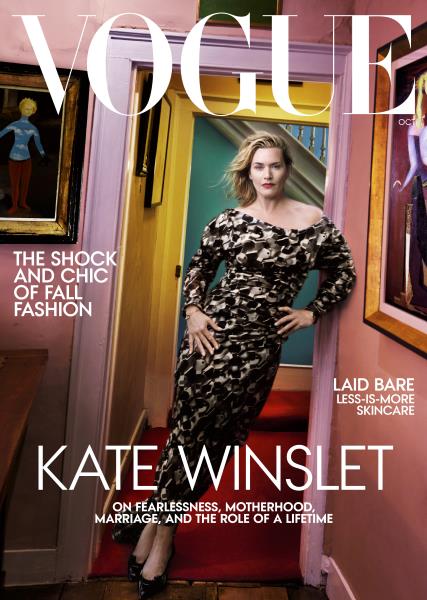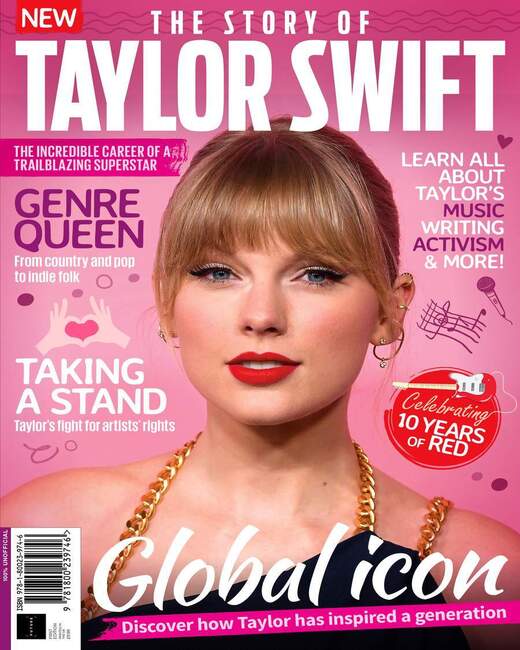Here is the development process for my magazine. I will put all of my ideas here and reflect on the decisions that I make.
Genre: Womens' Fashion
Sub-genre: Makeup and new fashion trend
Name of magazine:
- Manner
- Couture
- Aesthetic
- Trend
Here is the development process for my magazine. I will put all of my ideas here and reflect on the decisions that I make.
Genre: Womens' Fashion
Sub-genre: Makeup and new fashion trend
Name of magazine:
This is some research I did of Stuart Hall's representation theory.
Stuart Hall's theory states that media does not reflect meaning, but rather creates meaning. According to Stuart Hall, meaning is created by a hegemonic group of rich, straight white men in order to maintain power. Stereotypes are then created as a result of the lack of diversity.
a. What a representation is:
In Hall's theory, representation refers to the process through which meaning is created and communicated through signs, symbols, languages, and other forms. It involves the portrayal or depiction of ideas, individuals, groups or concepts, often mediated through various forms of media.
b. Meaning:
Meaning in representation is not inherent but rather constructed through shared cultural and social frameworks. Hall emphasizes that meaning is produced through a negotiated process where individuals and communities interpret representations based on their cultural backgrounds, experiences, and ideologies.
c. What a stereotype is:
A stereotype is a simplified and standardized representation of a social group, often based on broad generalizations and assumptions. Stereotypes can be both a product and a perpetuator of cultural norms, biases, and power dynamics, shaping perceptions and interactions with social groups.
d. Why are stereotypes used:
Stereotypes are used in media and society for various reasons, including simplifying complex information, reinforcing existing beliefs or power structures, and evoking emotional responses. However, the use of stereotypes can perpetuate justice, discrimination, and inequality by oversimplifying and misrepresenting diverse social groups.
e. What social groups are represented in media:
Hall's theory highlights that media representations often reflect and reinforce dominant social hierarchies. Historically, media has tended to predominantly represent and prioritize certain social groups, such as those in power or the majority, while marginalizing and misrepresenting the minority and underrepresented groups. Media often represents the social groups of religion, location, gender, age, race/ethnicity, social class, disabilities, and sexualities/LGBTQ+.
Think of two social groups that are stereotyped in Indonesian media, write about them in your blog (one positive, and one negative).
1) Balinese people
a. What the groups are:
The group I've chosen to research for the positive side is Balinese people.
b. How are they represented (mise-en-scene, sound, etc.):
In Indonesian media, Balinese people are shown to be living in a paradise-like environment. They are always shown in lush landscapes, harmonious lives, and having a rich culture and unique traditions. The music used in these adverts are always either peaceful and tranquil, while showcasing the different tourist spots of Bali. It is shown as a desirable place to visit, for other Indonesians and international tourists.
c. What the reason for this is:
The representation of the Balinese people in the media is to serve the tourism industry, which is a significant contributor to Indonesia's growing economy. Portraying Bali as a paradise is likely to lure both domestic and international tourists, driving economic growth for both island and the whole country.
d. How does the audience receive this message:
Audiences typically receive this message positively as it reinforces the idea that Bali is a must-go travel destination. However, it also creates unrealistic expectations and contribute to over-tourism and ecological challenges such as pollution and overpopulation for the island.
e. Examples from media texts (include images/screenshots, videos, etc.):
2)
Here is the research for my magazine.
Magazines are often displayed prominently near the store entrance or in crowded, high-traffic areas to grab the customers' attention. To attract and catch their attentions, magazines use bright colors, bold and capitalized fonts, and appealing images on the front page cover. Magazines are most likely to be placed at eye-level and where customers are likely to browse, increasing the chance of them buying one. In Western culture, people read from left to right. The top left is the most important, especially the left third, because it is the spot where most people draw most of their attention to. When magazines overlap, only the left side is shown. Hence, it is important to highlight the left side with important articles and images.
 |
| A magazine display in Japan |
 |
| A magazine display in Japan |
During our school trip to Japan, I photographed several magazine displays. They are commonly found everywhere as reading plays a big part in the Japanese culture, and magazines can be easily found everywhere, such as places that are easily accessible by everyday commuters such as convenience stores.
 |
| This is an analysis of a magazine our teacher made for us to help us understand the different parts of a magazine better. I think it has helped me significantly in identifying features of a magazine. |
1. Vogue Magazine - October 2023 issue

- Vogue is an American magazine dedicate to lifestyle and fashion, including beauty products, haute couture, and runway. Vogue began in 1982 as a newspaper and has since then developed into a monthly magazine. British Vogue was launched in 1916, and as of today there are 28 different versions of Vogue.
Genre: Fashion and lifestyle
Demographics:
Age: 18 - 40
Gender: Female
Location: North America
Income: Middle to upper class
Star Appeal: Kate Winslet
Psychographics:
Personality: Confident, optimistic, social butterflies
Lifestyle: Dynamic, accomplished, invests in luxury products
Hobbies and Interests: High fashion, gossip, wellness, celebrity culture, romance
Media Language and Representations: The celebrity Kate Winslet is dressed in a bright, colorful dress and is surrounded by a bright background. It makes her seem bold, akin to how Vogue usually styles their magazine with bold colors and high-end fashion. But while fashion magazines often have many coverlines, this magazine has only 2 sparse coverlines. The main image is Kate Winslet, and leveraging her star appeal is a strategic choice to boost the magazine's popularity and sales.
Audience: The typical Vogue reader is a woman between the ages of 18 and 40, mainly from North America. They are well-educated, exudes confidence, and is often the life of the party. Her lifestyle is vibrant and successful, and they can afford purchasing luxury goods. They are deeply interested in the world of high fashion, celebrity news, wellness, and romantic pursuits. Vogue's audience appreciates the magazine’s mix of cutting-edge style, cultural insights, and the allure of high-profile personalities like Kate Winslet. These women are eager to stay ahead of fashion trends and enjoy indulging in sophisticated and exclusive content.
Industry: Vogue has established itself as a global brand with editions in multiple countries, including the United States, the United Kingdom, France, Italy, and many others. Its international reach allows it to capture diverse audiences and perspectives while maintaining a consistent standard of quality and style.
2. The Story of Taylor Swift - second issue
- "The Story of Taylor Swift" is a fan magazine created by Future Magazines. It has varied articles based on the pop-star's relationships to fashion choices.

Genre: Biography, celebrity, lifestyle, and music
Demographics:
Age: 13 - 35
Gender: Female
Location: North America with a global reach
Income: Varied but predominantly middle to upper class
Star Appeal: Taylor Swift
Psychographics:
Personality: Fans of Taylor Swift, non-fans who consume celebrity news and music-related content.
Lifestyle: Fans who actively engage with Taylor Swift's career, attending concerts, and participating in fan communities.
Hobbies and Interests: Listening to music, attending concerts, collecting merchandise, following Taylor Swift's social media, discussing her work with other fans.
Media Language and Representations: The cover consists of a singular eye-level shot of Taylor Swift herself during a photoshoot event. It features a bubbly font, as opposed to other celebrity magazines making their titles bold. It subverts the media conventions, as it also helps promote the magazines to a predominantly female and young audience. It also has illustrations instead of the usual photos.
Audience: The audience of "The Story of Taylor Swift" fan magazine consists of devoted fans, casual admirers, and curious consumers. Fans of Taylor Swift, predominantly aged between 13 and 35, form the core readership demographic. They are deeply invested in Taylor Swift's music, persona, and personal life, seeking in-depth articles and behind-the-scenes access to their favorite artist. Casual admirers may include individuals with a passing interest in celebrity culture or those drawn to Taylor Swift's influence in the music industry. Overall, the audience is united by a shared admiration for Taylor Swift and a desire to look into her story and impact.
Here is my weekly progress for the magazine project, and also a rough plan.
Week | Term 2 | Week | Term 3 |
1 (2 Oct) | Brief, Research | 8 ( 8 Jan) | Development |
2 | Research | 9 | Shoot |
3 | Research | 10 | Shoot, Self Reflection |
4 | Proposal | 11 | Post Production |
5 | Development | 12 | Post Production |
6 | Development | 13 (12 Feb) | Deadline (Monday 12th February) |
7 | Development | 14 |
Here is the brief for component 1. I have decided to choose the magazine option.
These are the images from my magazines cover, table of contents, and double page spread. LINK TO FINAL MAGAZINE Cover Page Table of Conte...
